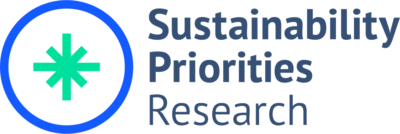We target high-impact environmental and animal welfare areas. High-impact areas are important, neglected, tractable, of crucial timing, or have spillover benefits.
Important: Issues have far-reaching implications on society, animal welfare, or ecosystems.
Neglected: The challenge does not currently receive sufficient attention.
Tractable: The challenge is solvable if reasonable efforts are invested into tackling it.
Crucial timing: Tackling the issue now avoids tipping points or cost increases in the future.
Win-win-win: Challenges offer opportunities to benefit people, animals, and ecosystems.
Important: Issues have far-reaching implications on society, animal welfare, or ecosystems.
Neglected: The challenge does not currently receive sufficient attention.
Tractable: The challenge is solvable if reasonable efforts are invested into tackling it.
Crucial timing: Tackling the issue now avoids tipping points or cost increases in the future.
Win-win-win: Challenges offer opportunities to benefit people, animals, and ecosystems.
Research areas
Priorities
We develop and leverage scientific methods to identify cause and intervention priorities for solving the most pressing sustainability challenges.

Animal welfare
By developing impact assessment methods for animal welfare and applying them to key areas, we aim to minimize the impact, especially of the food system, on animal welfare.

Climate change
Through global studies, we help uncover the potential of key, neglected solutions to effectively tackle climate change.

Biodiversity
We develop assessment methods, apply them to set priorities, and raise awareness on biodiversity’s essential role for ecosystem functioning.
Research publications
Peer-reviewed publication
Priorities Biodiversity
Prioritizing environmental challenges
International experts prioritized major environmental challenges to protect biodiversity and food security. They defined priorities by evaluating challenges’ importance, neglect, and tractability. The top priorities are pollinator loss and soil degradation for food security, and ocean acidification and land use change for biodiversity.
August 2020
Peer-reviewed publication
Animal welfare
Improving animal welfare
We developed a framework for integrating animal welfare into a life cycle sustainability assessment. We applied it to compare the animal welfare loss of eight food products: beef, pork, poultry, milk, eggs, salmon, shrimps, and insects. The results can help consumers, producers, and organizations to improve the animal welfare impact of their dietary choices.
November 2017
Peer-reviewed publication
Climate change
Reversing climate change
We target a particular high-impact, neglected aspect of climate change: negative-emissions technologies. We proposed a framework to evaluate their key aspects of feasibility, effectiveness, and side impacts, and defined optimal technology portfolios to meet the 1.5°C climate target.
February 2021
Peer-reviewed publication
Biodiversity
Evaluating functional diversity
We created a framework for evaluating functional diversity, which is an indicator of ecosystem functioning. It assesses functional diversity through three indices: richness, evenness, and divergence. Its application shows potentially large losses in functional plant diversity when converting natural forests to agricultural land use.
April 2020
Peer-reviewed publication
Animal welfare
Opportunities for dietary win-win-wins
We assessed dietary win-win-win opportunities of countries’ recommended diets, compared with their average diet. The results highlight the potential of dietary guidelines to maximize synergies among nutritional quality, environmental sustainability (carbon, land, and water footprints), and animal welfare.
November 2019
Peer-reviewed publication
Animal welfare
People’s valuation of animal welfare
This study quantifies Americans’ preferences about farming methods and the suffering they impose on different species. About a third of respondents believed animal suffering should be taken into account to a degree comparable to human suffering. The results offer guidance for efforts to reduce animal suffering effectively.
March 2020
Targeted topics for future research
Animal welfare Priorities
Priorities for fish welfare
Prioritizing research areas and interventions for fish welfare in aquaculture and capture fisheries
Animal welfare
Land animal welfare interventions
Assessing the potential of interventions for land animal welfare on the supply and demand sides
Climate change
Potential of CDR solutions
Global and spatial analyses of the most promising carbon dioxide removal (CDR) technologies
Biodiversity
Functional diversity
Extending the proof of concept of the impact assessment method to the global scale




